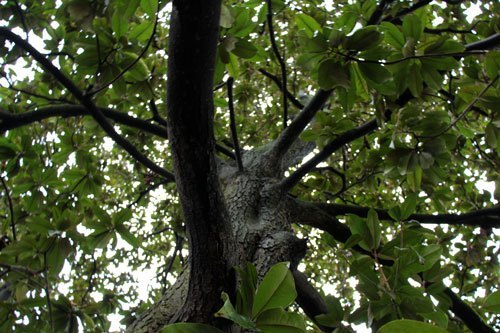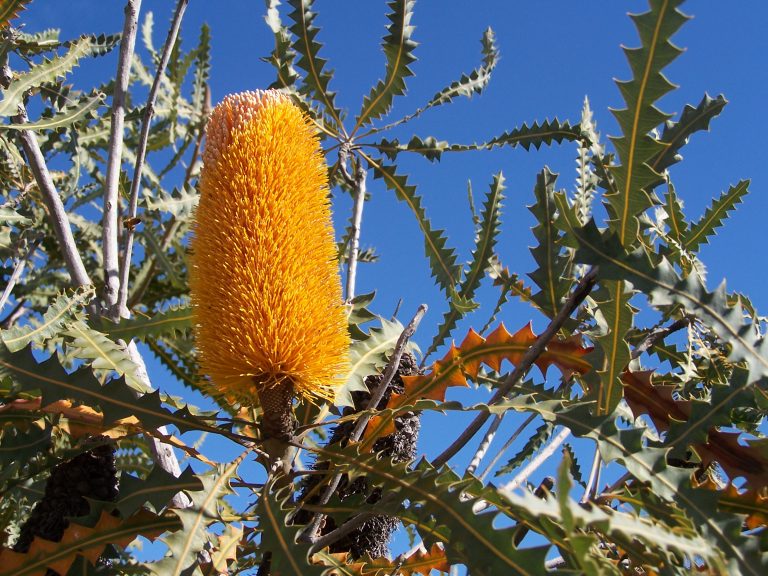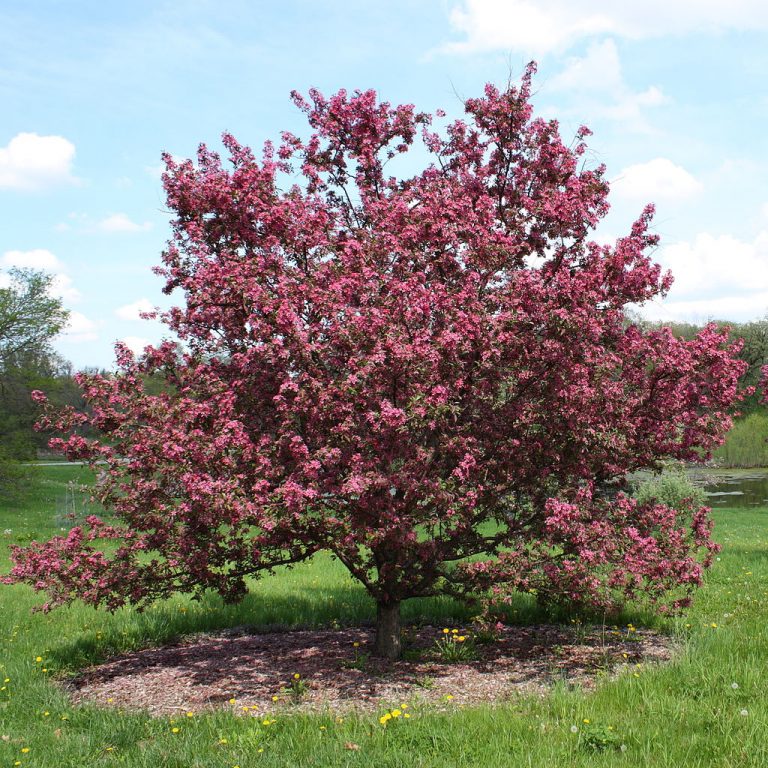Magnolia
Scientific Classification
| Kingdom: | Plantae |
| (unranked): | Angiosperms |
| (unranked): | Magnoliids |
| Order: | Magnoliales |
| Family: | Magnoliaceae |
| Genus: | Magnolia |
The Magnolia tree has great value because of its shape and flowers. They grow either as trees or as shrubs. The flowers of the Magnolia are sweet-smelling and of color, white, yellow, and purple color. Some of them are evergreen varieties and possess stems and buds. The back of the leaves is enveloped with a furry material of gorgeous copper-gold to brown colors. There are over 200 varieties of Magnolia indigenous to the tropic, subtropical and temperate zones of Central America, Eastern North America, Southeastern Asia, Caribbean and regions of South America. Today we see several varieties of these magnolias growing all over the world on account of their attractive flowers, their orientation and structure.
The foremost reason for the demand for the Magnolia tree is its big scented white flowers. The other attractions of this beautiful tree are their deep green glossy leaves and a big pod which has a striking appearance, which unwraps in the fall, and displays brilliant, berries with orange to red colors; the wildlife and birds enjoy eating them.
Magnolias belong to a large genus comprising of 210 varieties of flowering plants belonging to the subgroup of Magnolioideae which again comes from the big family Magnoliaceae. It derived its name from the French botanist Pierre Magnol.
This evergreen, big tree is likely to grow to a height of 90 feet, with the scented white flowers, with smooth and nearly velvety petals of width 8 to 12 in. This flower of snow-white color is very big and when tender they are shaped like a cup. The structure of the fruits is like a cone, 2 to 4 inches long and colored brown with a red hue. The fruit has a seed in the shape of a kidney, deep red colored. In autumn, when fully grown, these seeds are suspended from the tree hanging on threads, In The United States this tree grows as a street tree, this specimen stands free like a shade or framing tree. In India magnolia are grown in several parts only in gardens which are well maintained. Magnolias are a common tree in Manipur. Its Manipur, they call it “Ootahmbal” which means “tree- lotus” – They use the flowers for offerings during Puja.
Anatomy
Magnolia is an age old genus, existing even before the arrival of the bees. According to the books; this flower was evolved in order to invite beetles for pollination. In order to safeguard the pollination of beetles, the Magnolia flower carpels are made very strong. It is observed that the fossils of the Magnolia Acuminate specimen dates back to 20 million years. Another feature of the Magnolia is that it signifies a state of ancestry which explains why the bud of the flower is wrapped in a bract instead of a sepal; why the perianth portions are not differentiated, and instead of naming them as sepals and petals, they are named just as tepals. This feature is also observed in many other blossoming plants like Umbrella and Nymphaea (also in several plants derrived of late like Lilium).
Habitat
The normal varieties of Magnolia form a disjoined division, growing mainly in the East and South East regions and the less importantly at the center of the North Eastern regions of America, the West Indies, Central America and certain varieties grow in The Southern regions of America.
The habitat of Magnolia trees is the Himalayas and East Asia, Central America and Eastern Northern America. They spread out 30 to 40 ft., and grows to a height of 40 to 80 ft. Magnolia can be semi-green, evergreen or deciduous, based on their variety. Few deciduous varieties flower at the beginning of spring, prior to the tree shedding the leaves.
Growing at Home
Soil for Planting
The ideal soil for planting Magnolia is one which is properly drained, moderately acidic and mixed with leaf mold or compost, which will give it a good beginning.
Even though the majority of Magnolia thrives in soil that is properly drained, moist and moderately acidic, moderately alkaline to neutral soils are also OK for their growth. Magnolia adjusts with loam, clay or sandy soils; however, the majority grows only scantily in soils that are not well-drained. Plants that are properly set up tolerates drought to a certain extent.
Planting

Photo by: Theopolisme
The ideal place in your garden for your Magnolia is where it can get full sunlight and partial shade, which means in case you reside in a place that is warm, or where the climate is arid, you would do well to arrange for it to some shade from the burning heat of the noon sun. Hence, try not to expose your magnolia in direct sun or where it is windy. Strong winds can destroy bigger blooms and particularly the weak branches.
- Carefully take out the top most layer of soil to a thickness of 2 in. (5 cm) from the container or root ball until the top portion of the root is exposed
- For trees that are balled, take out anything that covers the root ball (like the burlap). For plants that are grown in containers, take out the container and prepare 4 slices, evenly spaced at the root sides. Take a knife, shovel or trowel for making a slice 1 in. (2.5 cm) deep. This method helps in doing away with roots that circle which is likely to hinder the growth of the roots.
- Make a hole to a minimum of 1.5 times broader than the container or ball.
- Make the hole slightly lesser than the root ball depth.
- Place the root ball in such a way that the root on the surface (exposed in the first step) in aligning with the surrounding surface of the soil that is not disturbed. In clayey soil, place the root ball in such a way that the top most roots is above the surface soil that is not disturbed in such a way that the 10 to 33 % of the root ball is uncovered.
- Replace the dugout soil in the hole round the root ball. Ram the soil to free it from air pockets, however, avoid excess pressurizing the soil. Certain Magnolia owners fill the hole partially, water it and when the water is completely drained, fill the rest of the soil in the hole.
- Instead of covering the top of the root ball with soil, apply a mild layer of mulch to cover the root ball/
- Following planting, water your Magnolia twice a week (in cold climates) and thrice a week (in warm climates) for the initial 6 months, and in the growing period water it once a week. Irrigate 2 to 3 gallons per inch (3.0 to 4.4 liters per cm) of the trunk diameter. Mulch around the plant to a thickness of 2 in. (5 cm) at the minimum (for light mulches such as pine needles apply it thicker). While planting fertilizers are unnecessary.
- Shape the trees at planting time by removing the weak and badly placed growth and tipping back long shoots.
Watering
In the course of nurturing your Magnolia tree, it is essential that you maintain the base of the tree moist by watering it. It is imperative to maintain the juvenile trees properly watered till they are well set.
Temperature and Humidity
Magnolias are grown in most of the climates provided they are shielded from harsh weather conditions.
Flowering and Maturity
The blossoming time of deciduous magnolia is during the spring prior to the arrival of leaves. Magnolia Grandiflora (bull bay), the evergreen seen often blossoms in flushes during the period from summer till the coming of autumn.
Care
During spring, when the buds of the flowers start to bulge is the right time to add fertilizers of slow release.
Regular maintenance of the lawn is needed to grow healthy trees of Magnolia. The wood and bark of the magnolia tree are destroyed easily by flying debris from the string trimmers and the lawn mowers. The wounds obtained from these flying debris are the entry points for diseases and insects.
Another important point in the care of the Magnolia tree is Pruning. Reduce the intervals in pruning because wounds are slow in healing. Prune broken branches immediately, since they damage the tree. The rest of the pruning is done only after the flowering of the tree.
While pruning to restrict the size of the magnolia tree, see that the crown is maintained with branches spread out, this is done by thinning out the stems along the trunk or sides of the shoots. Phase the pruning for years to keep the tree free of stress.
Varieties
Star Magnolia
- Latin Name: Magnolia stellata
- Native to: Japan
Saucer Magnolia
- Latin Name: Magnolia × Soulangeana
- Other Common Names: Tulip tree
Sweetbay Magnolia
- Latin Name: Magnolia Virginiana
- Other Common Names: Beaver tree, swam magnolia sweet bay, white bay, swamp bay, laurel magnolia
Umbrella Magnolia
- Latin Name: Magnolia tripetala
- Other Common Names: elk wood, Umbrella-tree.
Southern Magnolia
- Latin Name: Magnolia Grandiflora
- Other Common Names: Bull bay
- Native to: Southeastern regions of United States
Anise Magnolia
- Latin Name: Magnolia Salicifolia
- Other Common Names: Japanese willow leaf magnolia, Willow-leaved magnolia.
- Native to: Japan
Ashe’s Magnolia
- Latin Name: Magnolia Macrophylla sub-species Magnolia Ashei or Magnolia Ashei
- Other Common Names: deciduous magnolia, Ashe magnolia.
- Native to: North America
Bigleaf Magnolia
- Latin Name: Magnolia Macrophylla
- Other Common Names: Large-leaved cucumber tree
- Latin Name: Magnolia Acuminata
- Other Common Names: Cucumber tree, cucumber magnolia, mountain magnolia, yellow cucumber tree, yellow-flower magnolia, blue magnolia
- Native to: Eastern North America
Lily Magnolia
- Latin Name is Magnolia Liliiflora, alternatively, Magnolia Liliflor.
- Other Names: Jane Magnolia Woody-Orchid, Mulan Magnolia, Red Magnolia, Purple Magnolia and Tulip Magnolia,
- Endemic to China
Loebner Magnolia
- Latin Name: Magnolia x Loebneri
Kobus Magnolia
- Latin Name: Magnolia Kobus
- Other Common Names: Northern Japanese Magnolia, Kobushi magnolia.
- Native to: Japan

Having discovered a fondness for insects while pursuing her degree in Biology, Randi Jones was quite bugged to know that people usually dismissed these little creatures as “creepy-crawlies”.







